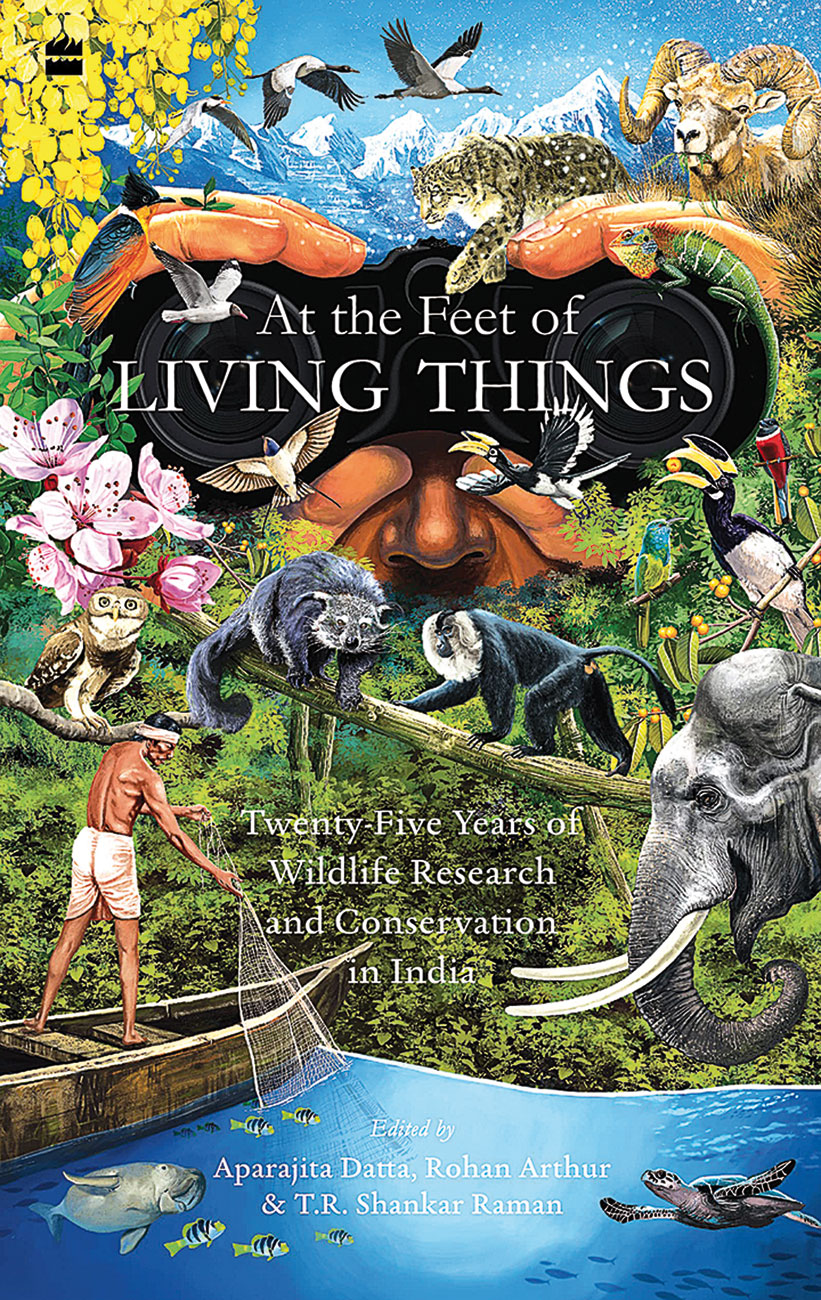Book Review: Twenty-Five Years Of Wildlife Research And Conservation In India
First published in Sanctuary Asia,
Vol. 43
No. 4,
April 2023
At the Feet of Living Things: Twenty-Five Years of Wildlife Research and Conservation in India
Edited by Aparajita Datta, Rohan Arthur and T.R. Shankar Raman
Published by HarperCollins
Paperback, 400 pages, Rs. 389/-

“There are two ways to be a student of nature,” begins At the Feet of Living Things. “You can collect, preserve, dissect and describe it, accurate in every sinew and cell. Or you can breathe along with it, engage with its messiness and feel what it feels to be a thing in the world.” This second kind of student recognises that to be human is not to be separate from nature, but to be an intrinsic part of it. This is a core philosophy woven through the book chronicling the research done by the Nature Conservation Foundation (NCF) over two and a half decades, ‘At the Feet of Living Things: Twenty-Five Years of Wildlife Research and Conservation in India’.
When one thinks of wildlife research, one pictures a khaki-and-camouflage clad person – usually a man – trekking, alone, through a dense forest, pausing at regular intervals to take notes, lay plots, or observe the mysteries of nature, either through a magnifying lens or binoculars.
The essays in this book blow this stereotype to smithereens, with descriptions of women and men working with their teams of people, often struggling to connect with local communities, in villages and towns and cities across the country. A clear focus of this book is on the relationship between people and nature, mirroring the research done by NCF over the years.
What stands out is how these essays are not success stories glorifying a conservation rockstar, but rather personal portraits by these researchers, of the people they have worked with and the species they have studied, the challenges, failures and successes they have faced along the way. Aparajita Datta writes about hornbill conservation in the Northeast, and working with the local communities there. Rucha Karkarey and Mayuresh Gangal write about their efforts to preserve the squaretail grouper in the Lakshadweep archipelago, working with local fisherfolk to establish a community reserve – and its unintended consequences. Charudutt Mishra writes about snow leopard conservation, and Elrika D’Souza about dugongs. Ananda Kumar, Ganesh Raghunathan, Vinod Krishnan and Sreedhar Vijaykrishnan write about their efforts to mitigate human-elephant conflict in Tamil Nadu and Karnataka, a chapter that was in turn heart-breaking and heart-warming. Shankar Raman and Divya Mudappa recount the restoration of Valparai over two decades, an inspiring story also told in the beautiful documentary, ‘A Dream of Trees’. Suhel Quader’s essay on birding for citizen science made me want to pick up my binoculars and run out the door to make a checklist for eBird! Each essay was a delight to read, well written and edited, giving one an idea of how wildlife research takes place, but without getting overly technical.
The book has beautifully detailed illustrations courtesy NCF researcher Sartaj Ghuman, which bring the writing to life – a personal favourite being the two donkeys peering out of the page and into your soul, concern for the author when he falls ill evident in their expressions!
When it comes to conservation, there is no silver bullet, and the varied approaches adopted by the NCF team through trial and error, over years, shows how important it is to tailor solutions to the specifications of an area. Reading At the Feet of Living Things gives a clear, unromanticised picture of the wildlife research conducted by NCF over the last twenty-five years. It inspires you to find ways to contribute to nature conservation yourself, even in as simple a way as opening up SeasonWatch or eBird, and noting the wildlife in your backyard.
Reviewed by Bhavya Iyer


